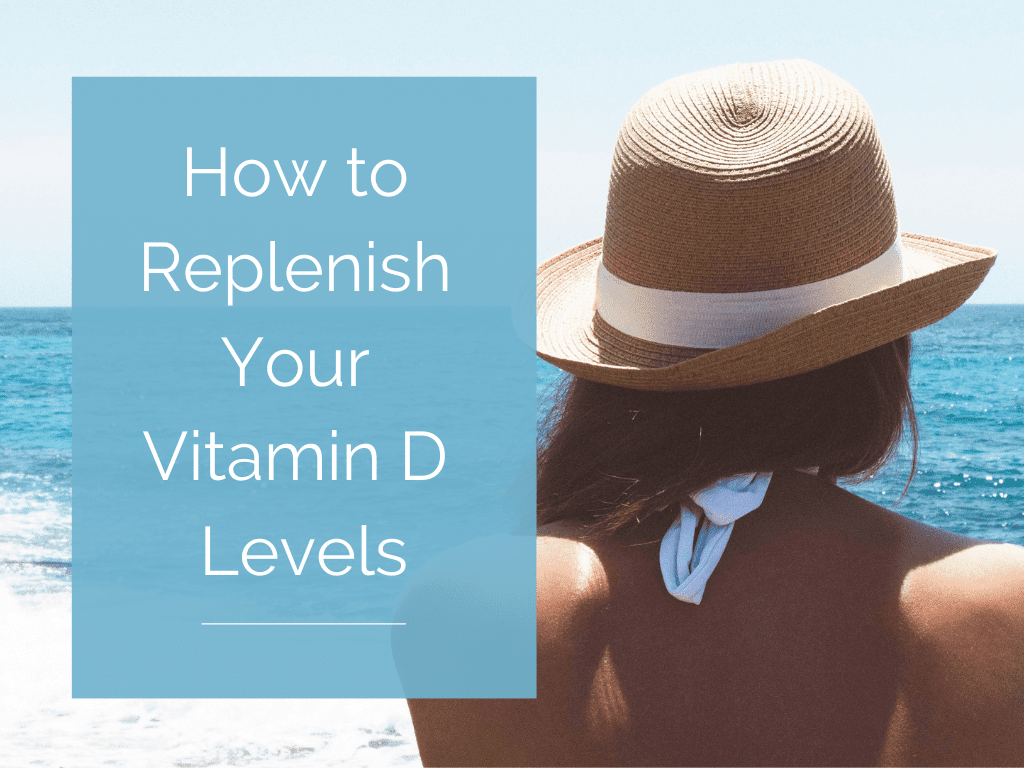
What You Will Learn From this Article
- The Benefits of Optimal Vitamin D Levels
- How to Test for Vitamin D Levels: Labs and Self Test
- Can You Get Too Much Vitamin D?
- Foods High in Vitamin D
- Getting Vitamin D from the Sun: Duration, Latitude, Altitude
- Does the Sun Cause Skin Cancer?
- Types of Vitamin D for Supplementation
There is some research I want to share with you which is vital. It’s centered on vitamin D and how it impacts the novel virus.
First of all, I’ve been talking about the importance of vitamin D from the beginning of this pandemic. This important nutrient has a huge impact on your health and because its receptor is present in most cells and tissues in the body, and it helps regulate multiple organ systems (hormonal, skeletal, gastrointestinal, nervous, skin).
In terms of the novel virus, a study that was just published this month found that vitamin D supplementation may help improve the outcomes of patients infected with the virus.
According to the study:
“The results suggest that an increase in [vitamin D] level in the body could either improve clinical outcomes or mitigate worst (severe to critical) outcomes, while a decrease in [vitamin D] level in the body could worsen clinical outcomes of COVID-2019 patients.”
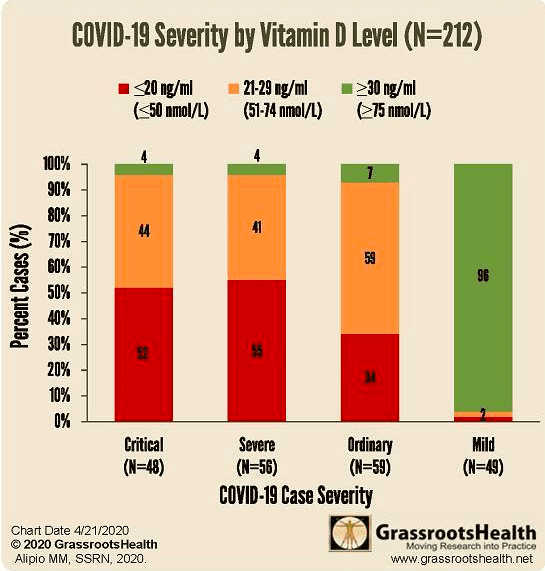
Source: Alipio, Mark, Vitamin D Supplementation Could Possibly Improve Clinical Outcomes of Patients Infected with Coronavirus-2019 (COVID-2019) (April 9, 2020).
Clearly, it’s more important than ever to ensure your vitamin D levels are in check. If you need more convincing, here are a few more ways vitamin D can benefit you:
- Lowers Hashimoto’s antibodies
- Builds stronger bones
- Can help breast cancer
- Balances blood sugar levels
- Has anti-inflammatory effects
- Reverses estrogen dominance
- Has antidepressant qualities
- Reverses autoimmunity
- Helps gut bacteria to produce vitamin B5
- Helps with hair loss
- Reverses and prevents anemia
- Improves sleep
Below, I’ll take a closer look at some of the biggest benefits of vitamin D and the impact it has on your health.
The Benefits of Optimal Vitamin D Levels
Vitamin D has so many health benefits, protecting against or improving symptoms in such a wide range of health conditions, a book could be written about it. However, here are just a few benefits of vitamin D that are especially relevant to women’s health, hormone balance and general optimal health.
Lowers Hashimoto’s Antibodies
If your TPO antibodies are elevated, vitamin D can help. I have consistently seen patients dosing up their vitamin D3 and seeing their TPO antibodies lowering. This is important as these antibodies show the level of attack of the immune system on the thyroid.
In this study, patients were given 1200-4000 IU of vitamin D3 for 4 months, 83% of the subjects have found their TPO antibodies to drop by 20.8%.
To better understand Hashimoto’s and what tests to ask for, go here.
Builds Stronger Bones
What most people don’t realize is that vitamin D is a precursor hormone for a powerful steroid hormone in your body called calcitriol, which is critical in bone strength and cell regeneration; in other words: slowing down the aging process.
Optimal levels of vitamin D help promote bone health by maintaining good levels of minerals in the body and by preventing the breakdown of bone by suppressing parathyroid hormone. This helps prevent the softening of bones in infants and children (rickets) and in adults (osteomalacia). As we age, vitamin D’s impact on hormones and mineral absorption helps prevent osteoporosis.
May Help Inhibit Growth of Breast Cancer
Checking for Vitamin D levels is one of the first things even traditional oncologists do in the treatment of breast cancers, and it’s a baseline protocol for integrative breast cancer treatment plans.
This study has found that breast cancer patients had lower levels of vitamin D. But, you don’t have to (and should not be!) waiting for a diagnosis to fix your vitamin D levels if they are low.
This Stanford University School of Medicine study (and there are several others) have found that vitamin D3 inhibits the growth of breast cancer cells and stimulates apoptosis—which is self-killing of cancer cells.
Balances Blood Sugar Levels
Healthy levels of vitamin D help make sure we’re producing adequate levels of insulin, one of our blood sugar regulating hormones (along with glucagon). Low vitamin D levels are associated with insulin resistance, metabolic syndrome, and Type 2 diabetes.
Additionally, vitamin D deficiency in children seems to increase a person’s risk of developing type 1 diabetes later on. One study even found that women with low vitamin D intake during pregnancy had babies with a higher risk of type 1 diabetes.
Has Anti-inflammatory Effects
Some but not all studies have found a correlation between low vitamin D levels and elevated C-Reactive Protein marker. The CRP marker is used as an indication of inflammation which is the underlying cause of most chronic conditions, including autoimmunity, cardiovascular conditions and metabolic disorders including type II diabetes.
In my experience, women with hormonal imbalances also experience some level of inflammation. This is especially true, not exclusive, for women with PCOS.
Upping your vitamin D is one of the easy tools you can add right away.
Reverses Estrogen Dominance
You may know by now that I’m passionate about estrogen dominance—a condition that most women experience and most have no idea they have. I have written lots more about it; you can start with this article to find out what this condition is all about.
Symptoms include PMS, infertility, fibrocystic breasts, breast lumps, irregular periods, fibroids, endometriosis and thyroid nodules among others. Estrogenic cancers include breast, uterine, ovarian, lung (in non-smokers) and prostate cancers.
Has Antidepressant Properties
Depression is a complex condition which can and should be addressed by holistically assessing a person’s nutritional deficiencies, inflammation, genetics, diet and hormonal imbalances. My friend Dr. Kelly Brogan is an award-winning expert on treating depression with means other than antidepressants.
One easy thing to look at is your vitamin D levels. I have witnessed many women experiencing a lift of depression after upping their vitamin D levels. Studies also support this statement.

Reverses Autoimmunity
It is a well-known fact that patients with autoimmune conditions such as Hashimoto’s, Graves’, celiac, Crohn’s, lupus, rheumatoid arthritis or multiple sclerosis (MS) are chronically low in vitamin D.
The previous assumption was that low vitamin D levels cause autoimmunity.
New research from Autoimmunity Research Foundation shows that the vitamin D receptors get downregulated by pathogens (such as parasites, bacteria, viruses, and yeast) compromising the update of vitamin D. These pathogens can be the primary causes of autoimmunity. Upping vitamin D levels (through sun exposure, more on that below) and/or supplementation, is key in managing an autoimmune condition.
Supports Gut Bacteria in Producing Vitamin B5
We are still discovering the power of gut bacteria and what helps and what destroys them. This study showed that low levels of vitamin D changed the intestinal microbiome reducing vitamin B5 (pantothenic) production in the gut.
If you interested in the connection between vitamin Bs and your hormones, check out this article.
Helps with Hair Loss
Hair loss is often associated with thyroid disease, but it’s also possible that vitamin D deficiency plays a role.
Two common types of alopecia, or hair loss, are alopecia areata (AA), an autoimmune condition, and androgenic (or androgenetic) alopecia. Scientists have found lower levels of vitamin D receptors (VDRs) in the blood and tissue of patients with both conditions. Dysfunction in this receptor ultimately leads to problems with hair growth. Blood levels of vitamin D were also lower in people with pattern hair loss.
Reverses and Prevents Anemia
This study has found that chronically low levels in vitamin D can cause anemia. This is interesting as we mostly think of anemia as a result of low iron and/or vitamin B12. We now know vitamin D can also play a role. Symptoms of anemia include deep fatigue, rapid heartbeat, difficulty concentrating, dizziness, pale skin, leg cramps, and insomnia.
Improves Sleep
Vitamin D may be helpful for getting a good night’s sleep. Preliminary studies indicate healthy levels of vitamin D may help you bank more hours per night and also help you to stay asleep throughout the night.
In fact, vitamin D deficiency may even be a contributing factor to the growing epidemic of obstructive sleep apnea (OSA), a condition in which an individual stops breathing multiple times throughout the night, resulting in unrefreshing sleep and increased risk for a number of other health conditions, including metabolic syndrome.
How to Test for Vitamin D Levels: Labs and Self Test
Even the most conservative doctors today would agree to run a vitamin D test for you.
If you want to order your own labs, go to YourLabWork. Finally, direct access to lab testing!
The Vitamin D Council recommends (and provides access to) the 25(OH)D test, pronounced, “Twenty-five Hydroxy D” test. There is another type of blood test for vitamin D, which is called a 1,25(OH)₂D test, but the 25(OH)D test most accurately reports your body’s vitamin D stores.
Recommended Ranges and Dosages of Vitamin D
If you go by the ranges found in labs or given by traditional doctors, “healthy blood levels” of vitamin D are from 30 to 100 ng/ml. If you are below 10, pretty much everyone agrees that you are severely deficient, and if you are below 30, the Endocrine Society and the Vitamin D Council still maintain that you are not getting enough.
Functional medicine’s recommended range for healthy people is 60 to 80 ng/ml, especially so for people with a family or personal health history of cancers and autoimmune conditions.
If your levels are below 60 ng/ml, functionally trained doctors recommend a dose of vitamin D3 in the range of 5,000 to 8,000 UI per day. It may take 3 to 4 months to get into a healthy range. You can then switch to a maintenance dose of 2,000 UI per day. You can easily get a blood test done to confirm it.
For people with Hashimoto’s Disease (and any autoimmune conditions), it’s very very important for your vitamin D levels to be in the upper ranges of 60.
Checklist to Self-Assess Your Levels of Vitamin D
Take this test and see how many you are ticking “yes”
– I rarely go out in the sun
– I put on sunscreen before I leave the house
– My clothes cover most of my body
– I live above 35 degrees latitude in the Northern or Southern Hemisphere (in other words north of Atlanta and LA or south of Sydney-Australia, Santiago-Chile or Buenos Aires-Argentina)
– I do not take a vitamin D supplement
– I do not eat wild, oily fish (salmon, mackerel, herring, sardines) two or three times a week
– I do not eat a lot of mushrooms
– I’m dark skinned
– I’m older than 60
– I’m younger than 20
– I’m overweight and carry significant fat
– When I press firmly on my sternum (breastbone around your heart), it hurts
– When I press firmly on my shins, it hurts
– I feel less energy and muscle strength than I should
– I’m depressed
– I have an autoimmune disorder (like Hashimoto’s, Graves’, Celiac, etc)
If you checked more than 3 of the above, there is a chance you are vitamin D deficient. The source of this checklist is from Dr. Michael Holick, the leading expert on vitamin D and author of “The Vitamin D Solution.”
Can You Get Too Much Vitamin D?
Short answer: Yes. Because it’s a fat-soluble vitamin, vitamin D is not so easily excreted from the body as water-soluble vitamins, the B’s and C. It’s possible to end up with toxicity, so don’t go over the recommended range for supplementation.
How To Get Started
There are a couple of things you could do right away:
- Self-assess to see if you are indeed vitamin D deficient (see below checklist)
- Get 30 min (or till your skin turns pink) sunlight – not just on your face but on your legs and arms. Your face is only 9% of your body. Arms are 18%, tummy 18%, back 18%, and legs are 36%. So, I say: dress down and hit the sun.
Foods High in Vitamin D
Other than fortified products (such as vitamin D in milk), there aren’t a ton of great natural foods sources for vitamin D.
The best foods for increasing vitamin D intake are lard, some seafood including fatty fish, cod liver oil, and egg yolk. Lard has 13 IUs of Vitamin D per tablespoon, which still takes a while to add up if you’re going for 5000.
Per 100 grams (3 ½ ounces), Vitamin D shows up in the following amounts:
Cod Liver Oil: 10,000 IU
Sockeye Salmon (canned, solids, without skin and bones): 859 IU
Smoked Ciscoes: 530 IU
Egg yolk (raw, fresh): 218 IU
Lard (Pork Fat): 102 IU
Vitamin D From the Sun
A quick and simple comparison for you: you get 400 units of vitamin D from a glass of fortified milk (which no adult should be drinking) versus 20,000 units of Vitamin D from 30 min of unprotected sun exposure (or until your skin turns slightly pink).
Vitamin D is created by your skin when exposed to the sun. So what’s the best way to get vitamin D? Get outside. It only takes 15 to 20 minutes of morning sun (between the hours of 8 am and 10 am). It is also recommended not to shower for 20 to 30 minutes after sunbathing for the skin to produce vitamin D. So, hold off that shower!
Latitude
Latitude (how far north or south you live) could make a huge difference in the amount of vitamin D you can make from sunlight exposure.
For example, if you go outside on a clear day in Boston (42.2°N) anytime from November to February you will not make any vitamin D at all— even if you decide to brave the weather and wear a tank top.
It’s worse farther north in Canada. If you’re in Edmonton (52°N), you can’t make vitamin D from October through March. You’ve just got a 6-month window to get all your sun exposure in. If you live up north and want to get some vitamin D production in the winter, you’re going to have to go south, say, Los Angeles (34°N) or Puerto Rico (18°N).
Altitude
What about altitude (mountains vs valleys)? That can make a difference, too. After all, the higher up you are, the shorter the distance the UV rays have to travel to reach you. Depending on how high up you are, your ability to make vitamin D could be twice or even 4 times what it was at a lower altitude.
You can calculate your potential for making vitamin D where you live (latitude and altitude) on this website.
Use an App to Calculate Your Vitamin D Dose
There is no straight and simple answer to that because it depends on what time of the year it is, your skin color, latitude and altitude. The good news is that there is an app called “dminder” you can install on your phone. It will determine based on your location
“The Shadow Rule”
Another great indicator of whether, or not, you can get vitamin D from the sun is using the length of your own shadow as a tool. If your shadow is shorter than your height, you will be able to produce vitamin D. If the shadow is longer than your body, you won’t be able to.
Body Exposure Matters
The more skin you can expose, the more vitamin D you can produce. This chart is great at showing how that if you only expose your face and hands, you are only getting 10% of the possible vitamin D dose from the sun.
Does Sun Cause Skin Cancer?
So what about skin cancer? For more education on this topic and how sun exposure actually prevents skin cancer, I recommend reading this article to understand that sun exposure does not cause cancer.
There’s an unjust fear of skin cancer and plenty of medical studies to debunk it. One such study conducted in Tarapaca University in Arica, Chile found an association between melanoma skin cancer and vitamin D deficiency.
When growing up in Southeast Asia, many of the locals did not use sunblocks and sunscreens for generations, and yet, skin cancer was not a reported health issue. Their darker skin pigmentation make them less prone to sunburns as compared to a those with lighter skin pigmentation, but not any more or less likely to develop skin cancer.
The same way all fats were demonized and made to fear as a cause of cardiovascular diseases, sun and skin cancer has taken on the same trajectory—to the great benefit of the skincare companies and sunscreen lotion manufacturers.
Bottom line: Sensible exposure to the sun is not only healthy but necessary—15 to 20 minutes in the morning sun, between 8 am and 10 am is optimal unless you are experiencing any specific skin conditions.
During winter, the option is vitamin D supplementation.
Types of Vitamin D for Supplementation
During autumn and winter months, or if sun exposure is simply not an option for you, you may need vitamin D supplementation because it’s hard to get it from food alone (see the above vitamin D content from food).
There are two types of vitamin D: D2 and D3. Vitamin D2 is produced in mushrooms when they are exposed to sunlight. Vitamin D3 is naturally present in animal fats. Studies show supplementing with D3 is better than D2 at raising your blood levels of the active form of vitamin D, calcifediol. In one study it was even twice as effective.
Vitamin D as Its Cofactors (to Make it Work)
Vitamin D needs the help of other nutrients (vitamins and minerals) to be able to do its work. Take a look at this chart—it illustrates what nutrients are needed to support the immune system and kill a pathogen (such as the novel virus).
As you can tell, it’s not just vitamin D but many other cofactors are critical to keep our immune system strong and responsive. They include vitamins A, C, EE, B6, B12, folate as well as minerals such as zinc, magnesium, copper and selenium.
What I Use Personally and Recommend
If you feel inclined to supporting us and our supplements, the two supplements I would recommend from us is the D3 Maximus (it also contains vitamins K1 and K2) and our Metabolic Multi (to help replenish all other minerals and vitamins). These are some of the supplements I personally use every day as well, especially now during novel virus.
Why Add K1 and K2 to a Vitamin D Supplement?
Vitamin K works synergistically with vitamin D for a number of functions in the body, including the regulation of oxidative stress levels (inflammation). It has been found that supplementing the two nutrients together is more effective than either one on its own.
Vitamin K comes in two forms: K1 (sourced from green leafy vegetables) and K2 (mainly found in fermented dairy but also produced in the intestine) and they have slightly different functions. There’s evidence that both forms are important for good health.
Vitamin K works with vitamin D to make sure calcium gets deposited in your bones and teeth rather than places it does belong, like in your kidneys (kidney stones) and blood vessels (plaque).
Bottom line: Replenishing vitamin D levels is not difficult. If you are low, allow 4 to 6 months of a higher dose of 5,000 to 8,000 UI per day of vitamin D3. I like the D3 formulation with K1 and K2 added (most women are also deficient in these)—the one I personally use and recommend is D3 Maximus.
To learn more about how to balance your hormones with supplements (and which to take), you can download our FREE Supplement Guide here.
Resources
https://www.ncbi.nlm.nih.gov/pubmed/?term=26683908
http://www.greenmedinfo.com/article/there-was-inverse-correlation-between-25oh-vitamin-d-and-c-reactive-protein
https://www.sciencedirect.com/science/article/pii/S0960076010000634
https://www.sciencedaily.com/releases/2009/04/090408164415.htm
https://www.ncbi.nlm.nih.gov/pubmed/7015957
https://academic.oup.com/ajcn/article/80/6/1689S/4690513#F3
https://www.ncbi.nlm.nih.gov/pubmed/22981997?dopt=Abstract
https://www.ncbi.nlm.nih.gov/pubmed/16085158
http://pediatrics.aappublications.org/content/118/5/2226
https://academic.oup.com/jcem/article/96/7/1911/2833671
https://www.ncbi.nlm.nih.gov/pmc/articles/PMC3166406/
https://www.ncbi.nlm.nih.gov/pmc/articles/PMC3866235/
https://www.ncbi.nlm.nih.gov/pmc/articles/PMC4288595/
https://www.ncbi.nlm.nih.gov/pubmed/23558409
https://www.ncbi.nlm.nih.gov/pmc/articles/PMC4712400/
https://www.ncbi.nlm.nih.gov/pmc/articles/PMC425078/
https://academic.oup.com/ajcn/article/79/5/820/4690192
https://link.springer.com/article/10.1007%2Fs00125-005-1802-7
http://care.diabetesjournals.org/content/26/12/3237.long
https://www.ncbi.nlm.nih.gov/pmc/articles/PMC4133032/
https://www.ncbi.nlm.nih.gov/pmc/articles/PMC3993051/
https://www.ncbi.nlm.nih.gov/pubmed/21751884/
http://www.nuclmed.gr/magazine/eng/jan14/9.pdf
https://onlinelibrary.wiley.com/doi/abs/10.1111/jocd.12224
https://www.ncbi.nlm.nih.gov/pubmed/20138991
https://www.ncbi.nlm.nih.gov/pmc/articles/PMC5007917/
http://press.endocrine.org/doi/10.1210/jc.2011-0385?url_ver=Z39.88-2003&rfr_id=ori:rid:crossref.org&rfr_dat=cr_pub%3dpubmed
https://www.ncbi.nlm.nih.gov/pubmed/18290718/
https://ndb.nal.usda.gov/ndb/nutrients/index
https://www.ncbi.nlm.nih.gov/pmc/articles/PMC5613455/
https://www.ncbi.nlm.nih.gov/pmc/articles/PMC3648717/
https://www.ncbi.nlm.nih.gov/pubmed/22552031
https://www.ncbi.nlm.nih.gov/pubmed/18492750
https://www.ncbi.nlm.nih.gov/pmc/articles/PMC2909045/
https://www.vitamindcouncil.org/i-tested-my-vitamin-d-level-what-do-my-results-mean/



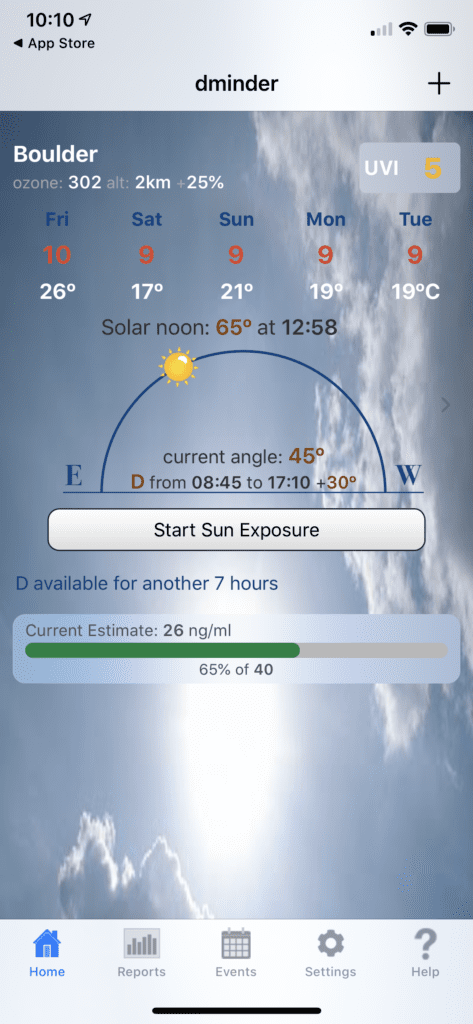
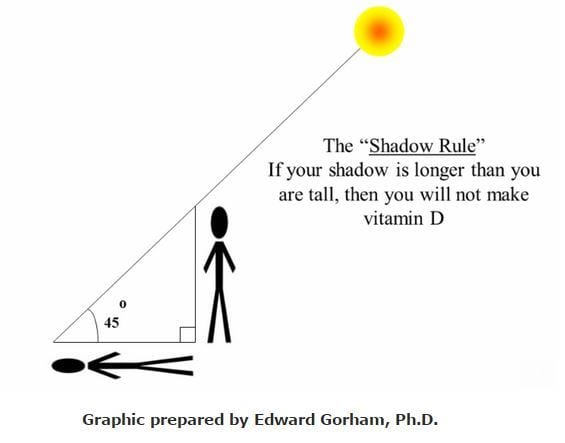
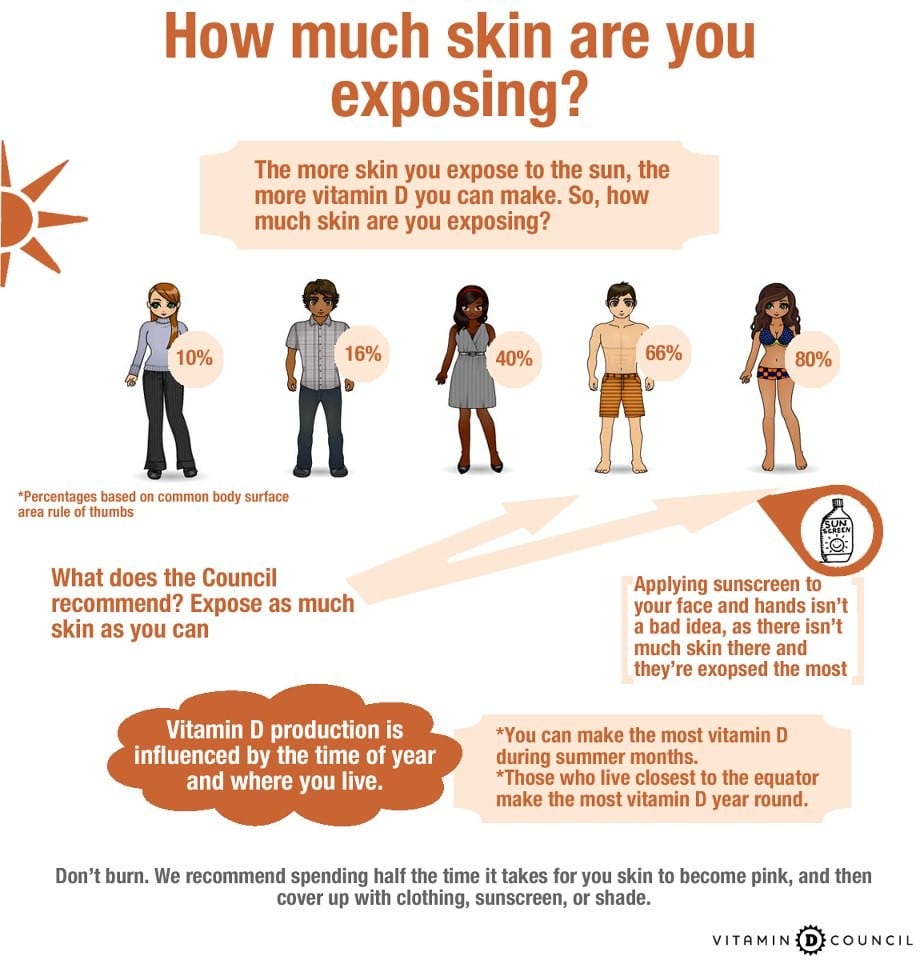
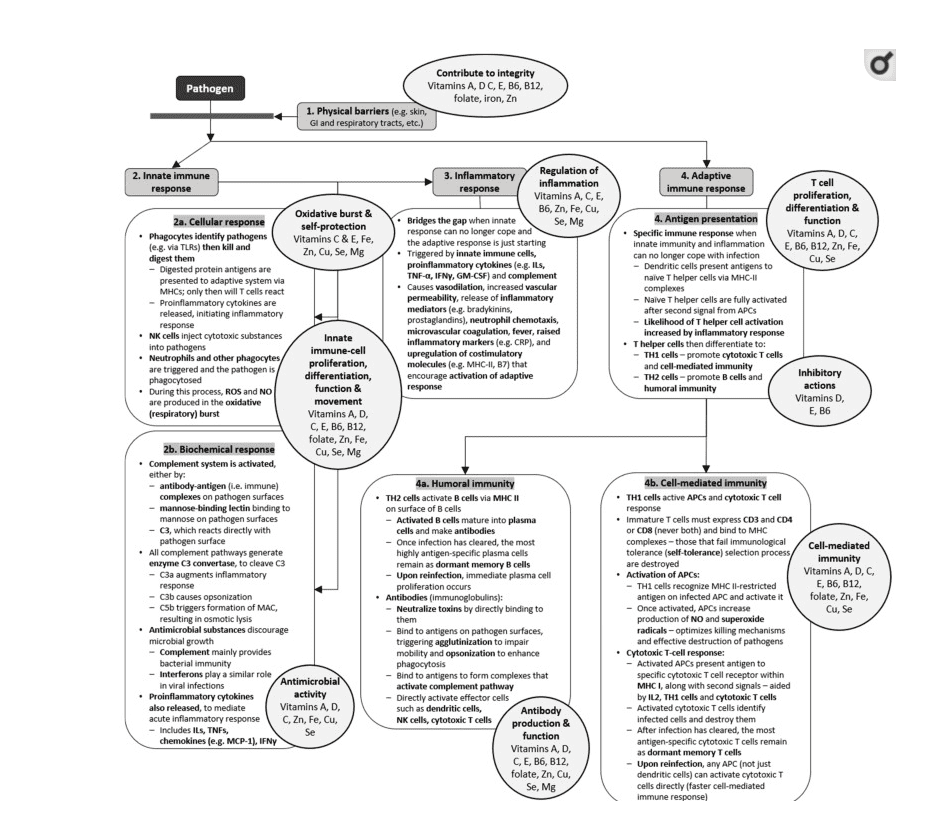
I enjoyed the article – in one paragraph it states optimal time is between 8 and 10 am and further down is says optimal time is between 10 and noon. Is that an error or just two differing opinions?
Hi Geri,
Thank you, We will edit this. I believe the 10am-12pm 15-20 minutes is the correct window. ~Deanna HB Team
Great post..
Shared…we do add Cal plus Mag to our D3 K2 protocol.
Any research about those of us of northern European decent who have been northern US dweller our whole lives?
Thanks
C
Hi CC,
Very good! Thank you for your input here. We will keep you posted if we find more on this. ~Deanna HB Team
I wonder about sun exposure vs safe sun screens for very fair skinned easy burners such as small red haired children, for example.
Yes Mary,
Sometimes that is what is needed. Here is an article addressing how to choose a sunscreen https://hormonesbalance.com/articles/how-to-pick-a-safe-sunscreen/ ~Deanna HB Team
I wonder why my daughter was told not to take K1 and K2 when she got diagnosed with G6PD. Any comment? Can you please advice where I can get ore information on this condition. Health care does not have any more info other than no gluten and fava beans.
Thank you so much, I have been looking for this info. About how to bring the TPO antibodies numbers down for a very long time. God bless
Hi Karima,
We cannot advise on the K1/K2/G6PD. However, for your inquiry for bringing down TPO antibodies, here is a free workshop to learn more about balancing hormones and supporting the thyroid https://hormonesbalance.com/cfb/. ~Deanna HB Team
Great to have more info on Vitamin D. A couple questions: One part of the article says to get morning sun between 8 and 10 and another part suggests 10 to 12. Can you please clarify? And then, if I live at 5200 feet, does that mean I need 4 times less sun exposure, i.e., just 4-5 minutes or maybe 10 will do the trick?
Hi Mary,
Yes, we will have to fix that. I believe she meant the 10 to 12pm (15-20 min). I am thinking 5-10 minutes is good. ~Deanna HB Team
Awesome article. Thanks!
We’re glad you enjoyed it. Thank you, Clifford! ~HB Support
Great article with some good tips and things to look into. Thanks for sharing.
Hi Emily,
Thank you for taking the time to read and share your thoughts. ~Deanna HB Team
and your credentials are ?
What are yours, my dear?
Loved this article. Where can you order your own 25(OH) D test ?
Thanks
Deborah
My regular d test was 38. I have neck pain. Arm muscle pain and trouble sleeping and some back pain. Never had back pain before. Since I took d3 2000 for
2 days my sleep already better and pain better
Hi Deborah,
You may want to check out this link for labs https://yourlabwork.com/hormonesbalance/. They do offer a nutrient panel. ~Deanna HB Team
[…] Vitamin D. First and foremost, vitamin D. Here in Canada, and all the other northern hemisphere countries, there is no chance to absorb vitamin D from sunlight exposure during the cold months. I really like this article it explains everything you need to know: https://hormonesbalance.com/articles/how-to-replenish-your-vitamin-d-levels/ […]
I am a great believer in Vit D. When I look at the covid19 statistics throughout USA, it is clear just who is most likely deficient. Despite the populations of Fl. and CA., most who died were elderly. Most likely, sun is limited for those in homes or housebound situations. Even children today are spending more time indoors on electronics; hence, they are re also experiencing this virus. I have sent my concerns to the CDC, Dr. Birx and the White House…as well as some news programs. Why aren’t we supplementing in nursing homes? Why isn’t this information being made in a very public way by the so-called experts? I have my entire family and all my friends taking Vit D3. May I copy this article and send it to the White House?
Thanks for a deep dive into this topic! I’m curious if you’ve tried the no cost DMINDER app that can be set to your geography, pigment etc to help more accurately gauge just how much Vitamin D is created from the sun on your skin. Since using this gauge I’ve come to realize just how off the 10 to 20 minute exposure rule of thumb is for me! Reading this article makes me even more mindful of how come I need to get some Vitamin D.
I have Hashimoto’s and I take 10,000 D3 a day. My antibodies have been greater than 1,000 for the last year. I also live in Florida and get a lot of sun. So lowering antibodies I guess is not true in my case. However, I am a huge advocate of D3 and tell everybody to get their levels tested!!
I have told that the best time to take vitamin d from the sun is between 7am and 9am but , is exactly when my Sadie is taller then me. I live in Tx. Could you explain me it?